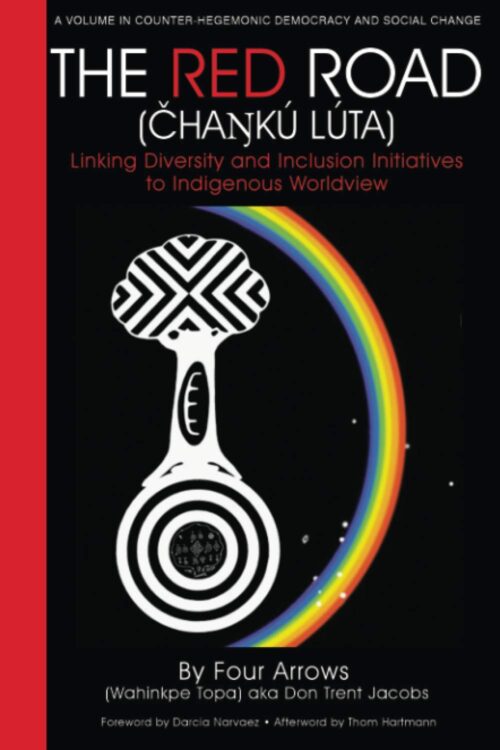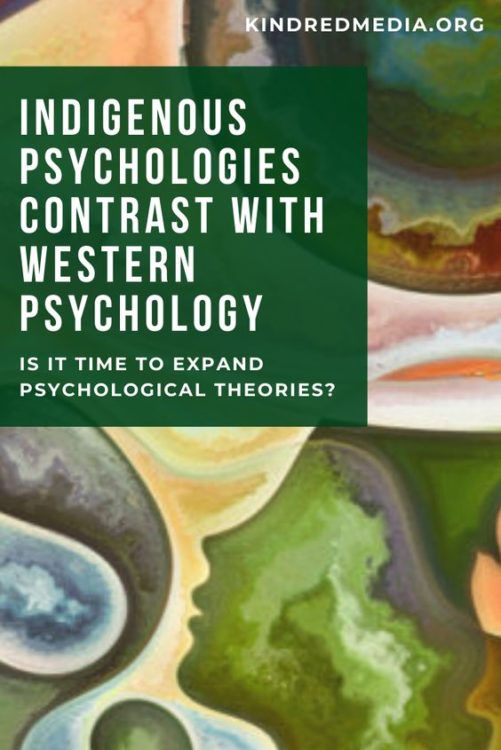Editor’s Note: Four Arrows refers to the Worldview Chart found here in this article. Feel free to download it and share.
What fundamental view of the universe will guide and direct America’s future, especially in the realms of politics, economics, science, technology and education? –David Naugle
Colonization and its problematics began with a new worldview around 9,000 years ago in Central Europe. According to current research, it began with an intensification of agriculture and social hierarchy. Later, it was carried on by the Romans and Greeks. Early Greek philosophy, the foundation of Western thought, supported the emergent worldview. Then, from 711 to 1492, Black-skinned North African Muslims (Moors) who controlled the Iberian Peninsula used the “advantages” of such thinking to advance civilization in many ways. At the same time, however, they strengthened the hierarchal way of social order. They also made slaves out of Caucasian women. In these times, there was no such thing as “racism” relating to people of color. Hierarchal systems merely demarcated humans through selected differences to assign power to certain groups. Class and wealth were the main divisions in the polarized hierarchies. Constant imperialistic wars and colonization of new territories created ever-changing hierarchies.
In addition to the low status of women and anyone else not in the aristocracy, medieval Europe was not a pleasant place to live. Poor hygiene, inadequate medicines, filthy water, constant war, rampant deforestation, gross inequality, etc. Eventually, the deforestation and wars led to the Black Death that wiped out nearly 40% of Europe’s population before 1492. (Heikkinen, 2015).
By 1492, Ferdinand and then Isabella expelled the Moors from Spain. Hierarchy continued of course, with medieval aristocrats and Catholic rulers viewing themselves as superior people and most others bowing to them. This of course is also the famous year that Columbus bumped into an island in the Bahamas. Genocide and slavery followed, setting the stage for African slavery. (They were easier to identify, did not know the land as well as “Indians” and some probably thought they were exacting revenge on the Moors. In any case, colonizing went into full swing in 1493 with the Doctrine of Discovery. Issued by Pope Alexander VI as a Papal Bull in 1493, it offered religious justification for the genocide and subsequent colonization that is still woven into the laws and constitution of United States, beginning with words in the Declaration of Independence. After asserting “all men are created equal,” a later paragraph, describing the actions of the King of England, says: “He has excited domestic insurrections amongst us, and has endeavoured to bring on the inhabitants of our frontiers, the merciless Indian Savages whose known rule of warfare, is an undistinguished destruction of all ages, sexes and conditions” (July 4, 1776).
So, we have a picture of the poor quality of life in medieval Europe prior to 1492, but what was it like in the Americas? Did they deserve the demeaning reference placed in the Declaration of 1776? If we cut through the romantic, generalized notions, while at the same time remain critical of hegemonic, white-washed literature, media, and flawed scholarship, I propose the picture is worth considering if we have a choice between the two worldviews. (Many contemporary scholars and great thinkers have come to this conclusion, by the way, including David Suzuki, Vandanna Shiva, Noam Chomsky, Bill McKibben, Thom Hartman, Edgar Mitchell, and many more.) Historically, and this applies to the relatively few Indigenous cultures that have managed against all odds to hold on to their worldview, here are some facts about the very diverse traditional Indigenous cultures before contact. They had
- Similar ways of being in the world such as matrilineal systems and high respect for women; kinship relations aligned with land and other-than-human life forms; good health due to active gathering, hunting and “gardening” lifestyles
- Healthy, balanced diets, and clean water
- Good health overall (even in the mid-1800s, Plains Indians were the tallest of human beings at the time, according to one study at Ohio State University (2001).
- Good hygiene, bathing in rivers and using Sweat Houses
- Excellent care of teeth (especially in contrast to European pilgrims)
- Remarkable knowledge of plant medicines and shamanic healing techniques
- Strong spiritual beliefs emphasize a Great Mysterious Creator, the interconnectedness of all life, a sense of life’s continuance after death, and a belief in humans’ good nature of humans
- Philosophical concern for future generations
- Autonomous, independent focus on freedom and non-hierarchal egalitarianism, with community welfare as the primary goal
- Relatively peaceful societies (Nolan, 2003, van der Dennen, 2004, Gat, 2006, Four Arrows, 2008, Fry, 2013)
- Sustainable ecological systems (Klinger, L. 2008), (Magni, G. 2016) (Note, the largest ecological study ever done with 50 countries, 450 research authors, 15,000 peer reviewed papers, on extinction rates shows that extinction rates on lands under control of traditional Indigenous Peoples who still have their language and traditional knowledge and have control of their territory have managed to avoid the dismal extinction rate statistics describing the rest of the planet. 80% of Earth’s biodiversity is on the 20% of land managed by Indigenous Nations. (See Sneed, A. May 29, 2019, “What Conservation Efforts Can Learn from Indigenous Communities” in Scientific American or Four Arrows (May, 2019 “The Media Have Missed a Crucial Message of the UN’s Biodiversity Report” in The Nation click here)
There is a third picture we must also include in our short history. It must be of how our originally colonized people are faring under the continual colonization that most of us continue to support, even if inadvertently. This picture is not pretty. Although Indigenous People are on the front lines of environmental battles and many success stories exist, generally the genocide continues. Rape of Indigenous women, pollution of Indigenous Reserves, blatant hate crimes, unfair justice, forces assimilationist governments and education and more are rampant and largely invisible. Environmental movements largely ignore both Indigenous People and the knowledge of local wisdom keepers. Also, a number of Indigenous People have “joined the other side,” so to speak, for all the reasons you can imagine.
With this three pictures in mind we can now get to the title of this brief document. “Decolonization” is the process of rethinking our acceptance of the colonial ways of being in the world that are based on the anthropocentric, materialistic, Western worldview that caused them to happen when civilizations emerged in Europe around 9,000 years ago. It is about deconstructing the hegemonic maintenance of hierarchal, anti-Nature, unequal, individualistic, greedy systems that have created much of the existential situation we now face in the world. These systems include education, corporatism, governments, media, and religious orthodoxy that supports such hegemony. It involves learning about the truth relating to how we all lived for 99% of human history.
“Indigenization” is about returning to our collective, original worldview before it is too late. It also means valuing place-based knowledge. And, of course, it is about defending Indigenous People against further destruction. Indigenous rights and cultures, while fully supporting their efforts toward regaining sovereignty. It is about being an ally that understands treaty violations and the repercussions of state policies. Such “Indigenization” is thus a collaborative effort to re-embrace sustainable, egalitarian relationships with all of life, focusing on those suffering the greatest damage.
I have mentioned “worldview” often. I conclude by saying that worldview reflection in consideration of the two existing worldviews, the dominant one and the Indigenous one, holds the solution to bring our world back into balance. With this in mind, I offer a contrasting worldview chart that can help us replace the beliefs that are killing us with those that can save us. The more individuals who move from the left side to the right side, the closer we get to a critical mass. When this happens, the worldview will take over our institutions and social systems. Whether we can accomplish in this life time or not, we must continue so we can be thought of as “good ancestors” by those who may survive or by future generations.



